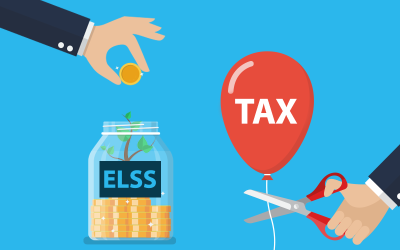How To Choose The Best Elss Mutual Funds To Invest?
-
Equity Linked Savings Schemes (ELSS) have gained significant popularity in India as an effective investment vehicle that offers tax benefits under Section 80C of the Income Tax Act. For those looking to invest in the Indian financial market, carefully selecting ELSS mutual funds can be a crucial decision that impacts long-term returns. This article aims to provide a comprehensive guide on how to choose the best ELSS mutual funds for investment. We will cover key aspects such as performance metrics, fund manager expertise, the significance of the lock-in period, and other critical factors that can help investors make informed choices.
Understanding ELSS Mutual Funds
ELSS mutual funds are diversified equity funds that invest primarily in the stock market. These funds come with a mandatory lock-in period of three years, which is the shortest lock-in tenure among tax-saving investment options in India. Beyond tax-saving benefits, ELSS funds also offer potential for significant capital appreciation.
Key Factors to Consider
1. Past Performance
One of the foremost criteria in selecting an ELSS mutual fund is its historical performance. While past performance is no guarantee of future returns, it does provide insight into how well the fund has been managed over different market cycles. Look for consistency in performance, especially during bear markets. Checking the performance over 1-year, 3-year, 5-year, and 10-year periods can be useful.
For instance, if two funds are being compared:
- Fund A: 1-year return: 10%, 3-year return: 12%, 5-year return: 14%
- Fund B: 1-year return: 8%, 3-year return: 11%, 5-year return: 15%
Fund A shows more consistency in giving decent returns, making it a potentially safer choice.
2. Expense Ratio
The expense ratio is the annual fee charged by the fund for managing your investments. Lower expense ratios can lead to higher net returns. It is advisable to compare the expense ratios of different ELSS funds before making your decision.
For example:
- Fund A: Expense Ratio: 1.5%
- Fund B: Expense Ratio: 2.0%
Fund A, with a lower expense ratio, would be more cost-effective and potentially deliver higher net returns.
3. Fund Manager's Expertise
The experience and track record of the fund manager play a critical role in shaping the performance of the fund. This includes their philosophy, approach to risk, and their past success in managing similar funds. Researching the fund manager’s background can provide additional assurance about the fund’s potential.
4. Portfolio Composition
Examining the current portfolio of the ELSS fund can also be informative. Understand the type of stocks the fund invests in, whether there is a focus on large-cap, mid-cap, or small-cap stocks, and the sector allocation. A well-diversified fund across different sectors generally offers better risk-adjusted returns.
5. Risk Metrics
Various risk metrics such as Standard Deviation, Beta, and Sharpe Ratio should be analyzed. These metrics provide insights into the volatility and risk-adjusted returns of the fund. A lower standard deviation and beta indicate lower volatility, while a higher Sharpe ratio is indicative of better risk-adjusted returns.
6. Lock-in Period
While the lock-in period for ELSS funds is a standard three years, understanding its implications is necessary. Unlike other mutual funds, you cannot redeem or liquidate your investments in an ELSS fund before the completion of this period. This lock-in can act as a forced discipline, ensuring that you remain invested for a longer horizon which is often beneficial in equities.
Performing Due Diligence
In addition to these criteria, it is advisable to read the fund’s offer document and latest fact sheets. These documents provide a deeper understanding of the fund’s philosophy, performance, and future outlook.
Calculations and Projections
Assuming an investment of INR 1,50,000 (the upper limit for 80C deductions) and an annual return rate of 12%:
- After 3 years:
- Future Value \( = P \times (1 + r)^n \)
- \( = 1,50,000 \times (1 + 0.12)^3 \)
- \( = 1,50,000 \times 1.4049 \)
- \( \approx 2,10,735 \)
Thus, an investment of INR 1,50,000 in an ELSS fund with a 12% return rate would grow to approximately INR 2,10,735 over three years.
Conclusion
Choosing the best ELSS mutual funds involves a meticulous evaluation of multiple factors. By understanding past performance, expense ratios, fund manager expertise, portfolio composition, and risk metrics, investors can make informed decisions that align with their investment goals. Structuring the investment within the parameters of the lock in period also demands thoughtful consideration.
Disclaimer
The information provided in this article is for educational purposes only and should not be construed as financial advice. Investing in the Indian financial market involves risks, including the loss of principal. Investors are advised to conduct their own research or consult with a financial advisor to weigh all the pros and cons before investing in ELSS mutual funds.
Summary
Investing in ELSS mutual funds is a strategic choice for tax-saving under Section 80C, coupled with potential capital appreciation. To select the best ELSS funds, consider past performance, expense ratios, the expertise of the fund manager, portfolio composition, and risk metrics. With a mandatory three-year lock-in period, choosing an ELSS fund involves a thorough examination of these factors to ensure disciplined, long-term investment. Important calculations, such as future value projections, assist in understanding potential returns. Investors are urged to carry out comprehensive research or seek professional advice to effectively navigate the complexities of the Indian financial market.
